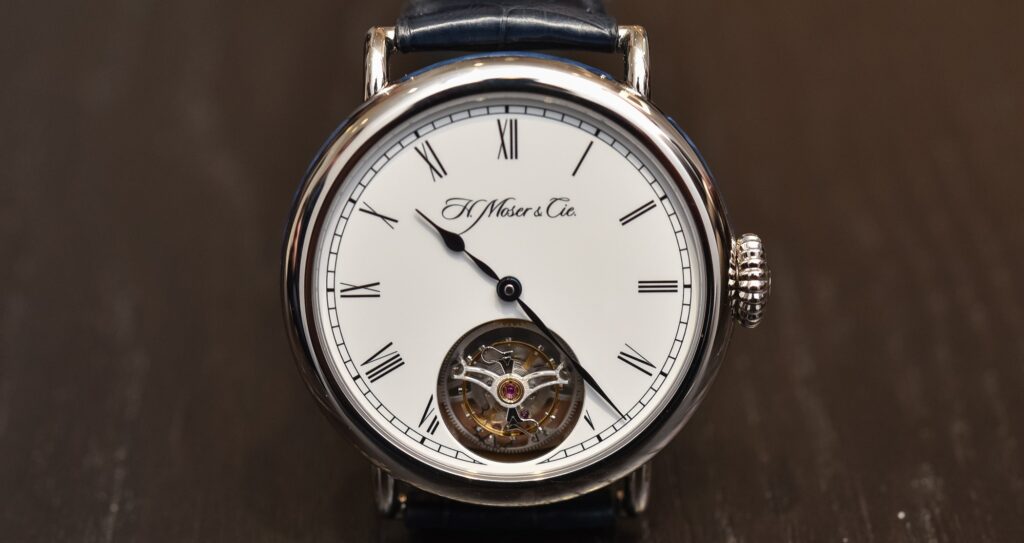Can Young People Read Traditional Dials?
As we tick off the years of our lives, the phrase “what are they teaching you in school?” becomes more commonly thrown out. With an ever-changing technological world—one that’s fast-paced and digitized—the answer to that age-old question seems to be changing by the day. In terms of horology, there’s one particular school-house lesson that’s going by the wayside—reading an analog clock face. With U.K. schools outright ditching these aging timekeepers, and U.S. schools facing their own woes, it could very well be that the analog clock makes its way out of core curriculums around the world permanently. Although this may be troublesome to many, it’s really no surprise that this is the trend. With a new generation of college-aged adults worried about global economics, computational industries, and a social media inundated age of information, it seems strange to have an expectation for both students and educators to add this waning skill to their agendas. On the other hand, it’s a skill that has taught many people to make fast mental math computations on the fly. As there is sure to be a debate about the relative value of this skill in today’s world, there are already examples of the trend away from analog in our day-to-day lives.
On TV

One example comes from two fairly recent episodes of Jimmy Kimmel Live. In his segment titled “What Time is It” (aired May 2018) and its follow-up “Can You Do It?” (May 2019) Jimmy sent a film crew to ask young people if they could read analog clocks. “What Time is It?” featured children, presumably around elementary and middle school age, trying to answer this clock oriented question; The segment, as Jimmy’s monolog suggests, was in response to the UK deciding to move away from analog timekeeping in schools. Most of the kiddos in the “What Time Is It?” sketch got it wrong, but one particular youngster got it right—and received a Flavor Flav style clock-necklace as a prize. In the follow-up “Can You Do It?”, the poll group was a bit older—about High School to College aged adults. This particular segment had some folks throwing up their hands in disbelief (figuratively) at the responses young adults gave on the streets about analog time. One standout moment is when a young woman says that she hopes her professors don’t see the show, because she doesn’t want them to know that she hasn’t had to read a clock like that since “grade school”.
Old World Elements
An element to analog clock reading that is presumably difficult is the hands themselves. It seems that it has nothing to do with the Hindu-Arabic numerals (or “digits”) positioned on the dial. The interpretation of the hands alongside the numbers we’re all used to seeing on phones, computers, and digital watches is what’s baffling for new time-telling youth—based on the responses from younger people. After all, it does take some coaching to combine all of the elements of an analog clock. Teaching that sort of knowledge takes up valuable time in the classroom. Combined with this reality—the time system that our 12 hour am/pm split is based on has more to do with Egyptian obelisks than any daily meeting or appointment in today’s age. Historically all of the elements of an analog clock are so ancient, it’s no surprise that current interpretations are moving beyond this increasingly classic form of timetelling. In that vein, here’s a rhetorical question: When was the last time you had to use an abacus in math class?
Still Value

Unlike cursive, abacuses, VHS tapes, etc…, there is still an existing element of utility to analog timekeeping that educators see. To be noted: A lot of the information out on this aspect of the subject is still anecdotal. However, a few national publications including USA Today cite teachers who see a problem-solving and mathematical value to the continued teaching of analog timetelling. It does hold some logic to make this a part of both tradition and focused thinking in problem-solving, at least for the time being.
In general, exam times are becoming more stressful for children. These kids, whether we realize it or not, are being fed digital time from ours and our parent’s generation—making analog time seem more and more alien in the classroom. On top of this, testing has become the norm for education—instead of well-rounded curriculums—which is having new effects on the psyche of children as they grow and mature. So who has time for telling the time the old-fashioned way? As it stands, the UK—home of Big Ben—asked that question and has acted on it already.
Final Thoughts
As a watch and clock oriented business, we deal with a wide age range of people. When younger people interact with our business we sometimes hear, “I don’t even know how to read this anyway.” Even though this happens, modern workplaces and the adult world that these younger people are entering still operate on certain traditions in timetelling. Thus, these younger people are still picking up analog watches—many with minimalist dials—likely for appearances above anything else. It seems that the priority is less on traditionally preferred dials in education—to make room for more modern information. This doesn’t change the bittersweet reality of the nature of technological change. As timekeeping moves into the 21st century, with atomic time, digital time, and smartwatch capability, it will be interesting to see what “old-world” tech holds up in teaching. After all, the children are our future—hopefully they’ll at least give us the pleasure of sealing our favorite horological devices in a museum—and not a mausoleum.
Times Ticking has been in operation for more than 30 years, since 1982. We have performed watch repair for customers both locally and internationally. If it Ticks! We KNOW it! Our team of watch repair technicians have a combined experience in watchmaking of over 120 years.

